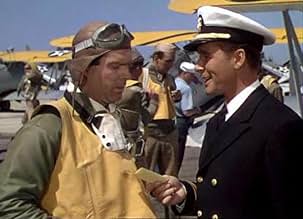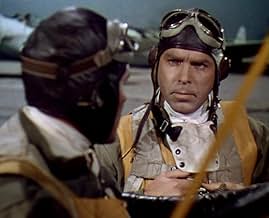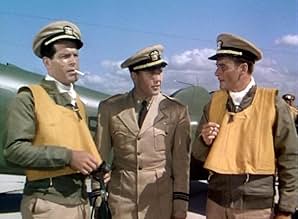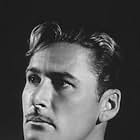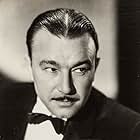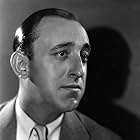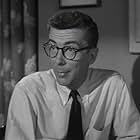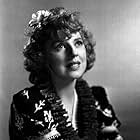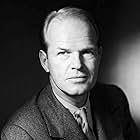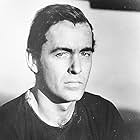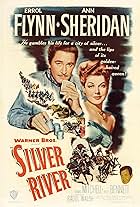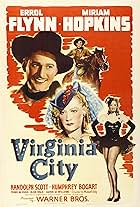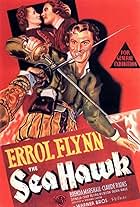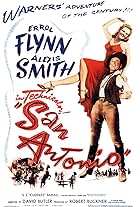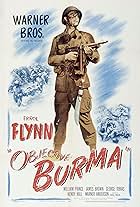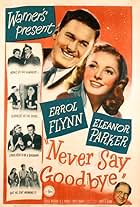IMDb RATING
6.5/10
2.1K
YOUR RATING
A military surgeon teams with a ranking Navy flyer to develop a high-altitude suit which will protect pilots from blacking out when they go into a steep dive.A military surgeon teams with a ranking Navy flyer to develop a high-altitude suit which will protect pilots from blacking out when they go into a steep dive.A military surgeon teams with a ranking Navy flyer to develop a high-altitude suit which will protect pilots from blacking out when they go into a steep dive.
- Nominated for 1 Oscar
- 1 nomination total
Lane Allan
- Measles Patient
- (uncredited)
James Anderson
- Pilot
- (uncredited)
Tod Andrews
- Telephone Man
- (uncredited)
James Conaty
- Party Guest
- (uncredited)
Garrett Craig
- Pilot
- (uncredited)
Storyline
Did you know
- TriviaErrol Flynn was criticized for playing heroes in WWII movies. Tony Thomas in his book 'Errol Flynn: The Spy Who Never Was' states that Flynn had tried to enlist in every branch of any armed services he could but was rejected as unfit for service on the grounds of his health. Flynn had a heart condition, tuberculosis, malaria and a back problem. Flynn felt he could contribute to America's war effort by appearing in such films as this one, Edge of Darkness (1943), Northern Pursuit (1943), Objective, Burma! (1945), and Uncertain Glory (1944). Reportedly, Flynn was at his most professional and cooperative he ever was while working on WWII-themed movies. The studios apparently did not diffuse the criticism of Flynn's state of health as they wished to keep it quiet for fear of his box-office draw waning. Flynn's real-life medical condition adds more bite to the line MacMurray's character says to him after the death of a squadron mate: "Are you an example of sound medical basis?".
- GoofsIt has already been noted by another contributor that the RAF fighter flown by Tim Griffin (Regis Toomey) is a disguised Ryan training plane. The fact that an open-cockpit, fixed gear, obsolete monoplane would represent a modern British fighter nearly two years into World War II, is an insult to movie-goers' intelligence. It would have been better to paint up a Brewster F2A Buffalo (which was in the movie, but not featured) as an RAF fighter, which would have been more accurate since the US had already given/sold many Buffalos to the British by that time under President Roosevelt's Lend-Lease program.
- Quotes
Lieutenant Doug Lee: As far as I'm concerned, a woman is like an elephant. I like to look at them, but I don't want to own one.
- Crazy creditsThe following appears in the opening credits: "The picture itself we dedicate to the pioneer flight surgeons of our armed forces, in recognition of their heroic efforts to solve the immensely difficult problems of aviation medicine. To the 'Flight Surgeons,' then, whose job it is to keep our fighting pilots in the air."
- ConnectionsFeatured in Dive Bomber: Keep 'Em in the Air (2005)
- SoundtracksWhat's New?
(uncredited)
Music by Bob Haggart
Lyrics by Johnny Burke
[Performed by the nightclub singer on Lee and Blake's double date]
Featured review
Other posters have discussed the supposed 'spy' story behind this film: That Errol Flynn attempted to get it made in Pensacola rather than San Diego because the Nazis wanted to see the layout at Pensacola. They've pointed out that in the studio days, an actor, even one with Flynn's stature, could hardly have dictated such a thing. Also the buildings shown appear to be in San Diego. Finally, the airplanes used in the film were already obsolete in 1941. The Pentagon would hardly have allowed anything the Nazis and Japanese didn't already know about to be presented in the film, (and we probably didn't have any such thing at that point anyway).
And that last point intrigues me. This film allegedly presents the cutting edge of aeronautical medicine. Yet, if that's the case, the Pentagon would surely not have allowed Hollywood to present that, either. If the film had been made after the war, it would be more believable that this represented in some way the efforts of the heroic doctors and flyers to conquer black-out and high altitude sickness. But in 1941, the only thing that could have been presented was old science, speculation or Hollywood hokum, which this is surely a mixture of. That makes the film, which is certainly entertaining, rather meaningless as a semi-documentary on the subject.
On the subject of Hollywood's obsession with comic relief, this is something that mars old movies to modern eyes. I'm sure there are things in our films today that will someday be considered an embarrassment but these moronic 'sidekicks' are about as funny these days as a minstral show. In this film, the constant return to Allen Jenkins and his problems with his wife are a maddening intrusion into the drama of the film. Particularly inexcusable is the interruption of the scene where Regis Toomey is about to be told that he can no longer fly and we seque to Jenkins again, then go back and pick up Toomey's story. Did 'Spig' Wead really write Jenkins' part into the script? I doubt it. (See my review of 'Hell Below' for another example of this type of cinematic butchery.)
And that last point intrigues me. This film allegedly presents the cutting edge of aeronautical medicine. Yet, if that's the case, the Pentagon would surely not have allowed Hollywood to present that, either. If the film had been made after the war, it would be more believable that this represented in some way the efforts of the heroic doctors and flyers to conquer black-out and high altitude sickness. But in 1941, the only thing that could have been presented was old science, speculation or Hollywood hokum, which this is surely a mixture of. That makes the film, which is certainly entertaining, rather meaningless as a semi-documentary on the subject.
On the subject of Hollywood's obsession with comic relief, this is something that mars old movies to modern eyes. I'm sure there are things in our films today that will someday be considered an embarrassment but these moronic 'sidekicks' are about as funny these days as a minstral show. In this film, the constant return to Allen Jenkins and his problems with his wife are a maddening intrusion into the drama of the film. Particularly inexcusable is the interruption of the scene where Regis Toomey is about to be told that he can no longer fly and we seque to Jenkins again, then go back and pick up Toomey's story. Did 'Spig' Wead really write Jenkins' part into the script? I doubt it. (See my review of 'Hell Below' for another example of this type of cinematic butchery.)
- How long is Dive Bomber?Powered by Alexa
Details
- Release date
- Country of origin
- Language
- Also known as
- Beyond the Blue Sky
- Filming locations
- Eglin Air Force Base, Fort Walton Beach, Florida, USA(background shots)
- Production company
- See more company credits at IMDbPro
Box office
- Budget
- $1,201,000 (estimated)
- Runtime2 hours 12 minutes
- Aspect ratio
- 1.37 : 1
Contribute to this page
Suggest an edit or add missing content






